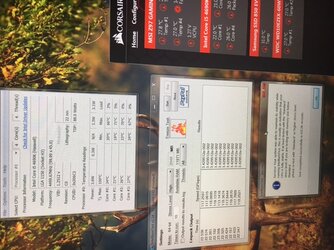murraya8922
New Member
- Joined
- Feb 6, 2017
- Location
- Texas
I'm not a complete noob at all, but I have what's probably a noob question....
I've build two rigs now, one of them about three times over, haha. I'll post the specs later, but my question goes across the spectrum pretty much I think.
So! I have a 4690K that I've had at about 4.5ghz for over a year now. I'm fairly familiar with the overclock process. NOT AN EXPERT, so don't bash me please.
I want to push the OC more, just for bragging rights really. I'm at 4.5ghz with 1.265v stable right now. Prime 95 for 2 hours, and IBT for 20 passes on ultra high. I have an AIO and temps never get above 75 on any core.
But I have a problem... when I push further and I get the blue screen, I restart, and get to a black and white Windows screen that says I need to start in safe mode, but my mouse and keyboard don't work, so I have to let it do it's thing...which takes about 15 sweaty minutes.
So my question is: What do I do when I get the blue screen??? Leave the PSU on and restart? Turn it all off and clear CMOS? Just restart??




My temps are within range, so I know I can push it further, but this step is scaring me from going forward. Any advice will be greatly appreciated.
I've build two rigs now, one of them about three times over, haha. I'll post the specs later, but my question goes across the spectrum pretty much I think.
So! I have a 4690K that I've had at about 4.5ghz for over a year now. I'm fairly familiar with the overclock process. NOT AN EXPERT, so don't bash me please.
I want to push the OC more, just for bragging rights really. I'm at 4.5ghz with 1.265v stable right now. Prime 95 for 2 hours, and IBT for 20 passes on ultra high. I have an AIO and temps never get above 75 on any core.
But I have a problem... when I push further and I get the blue screen, I restart, and get to a black and white Windows screen that says I need to start in safe mode, but my mouse and keyboard don't work, so I have to let it do it's thing...which takes about 15 sweaty minutes.
So my question is: What do I do when I get the blue screen??? Leave the PSU on and restart? Turn it all off and clear CMOS? Just restart??



My temps are within range, so I know I can push it further, but this step is scaring me from going forward. Any advice will be greatly appreciated.
Last edited:
